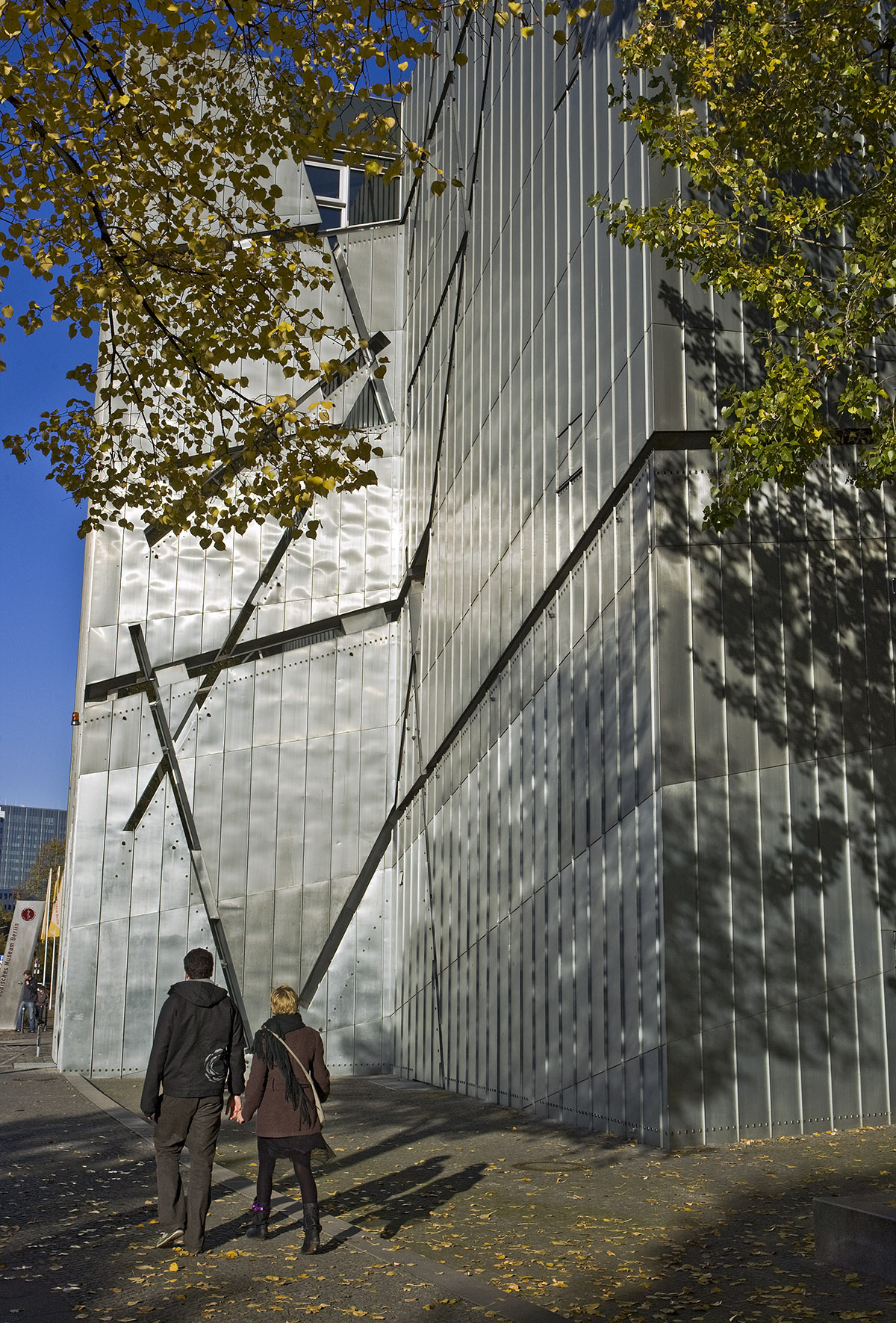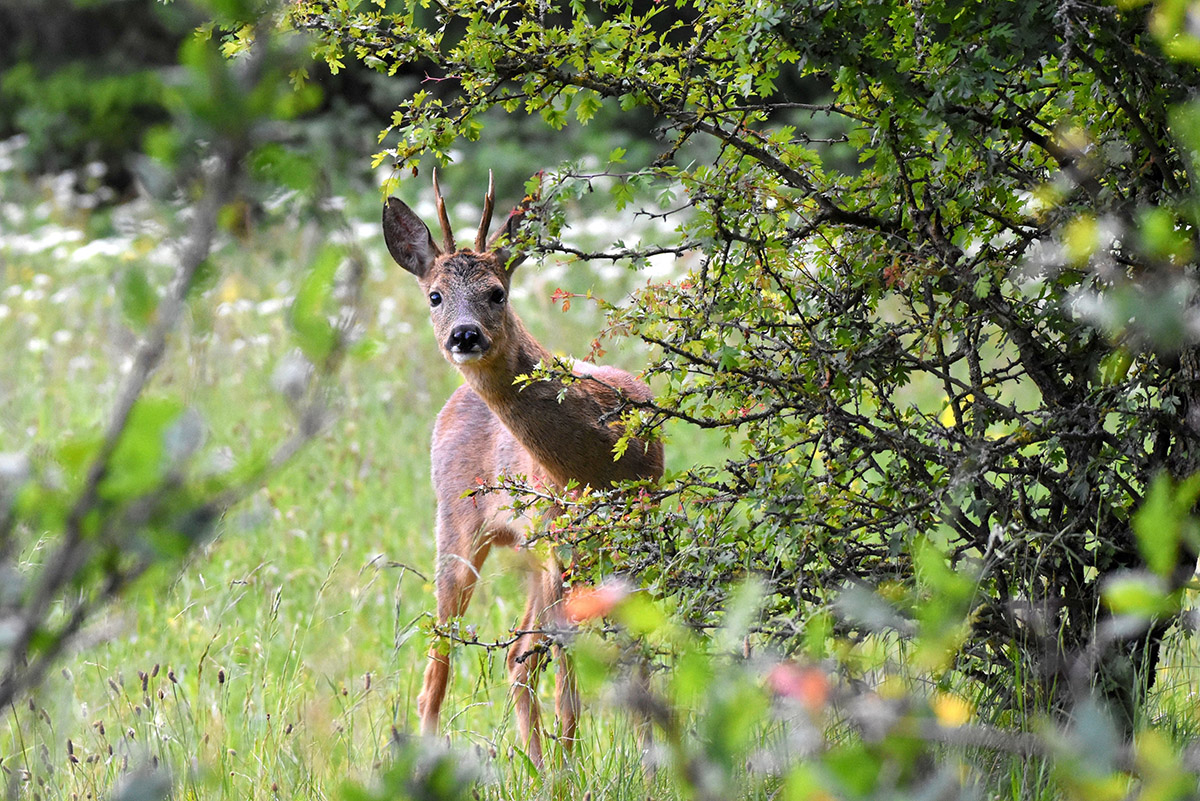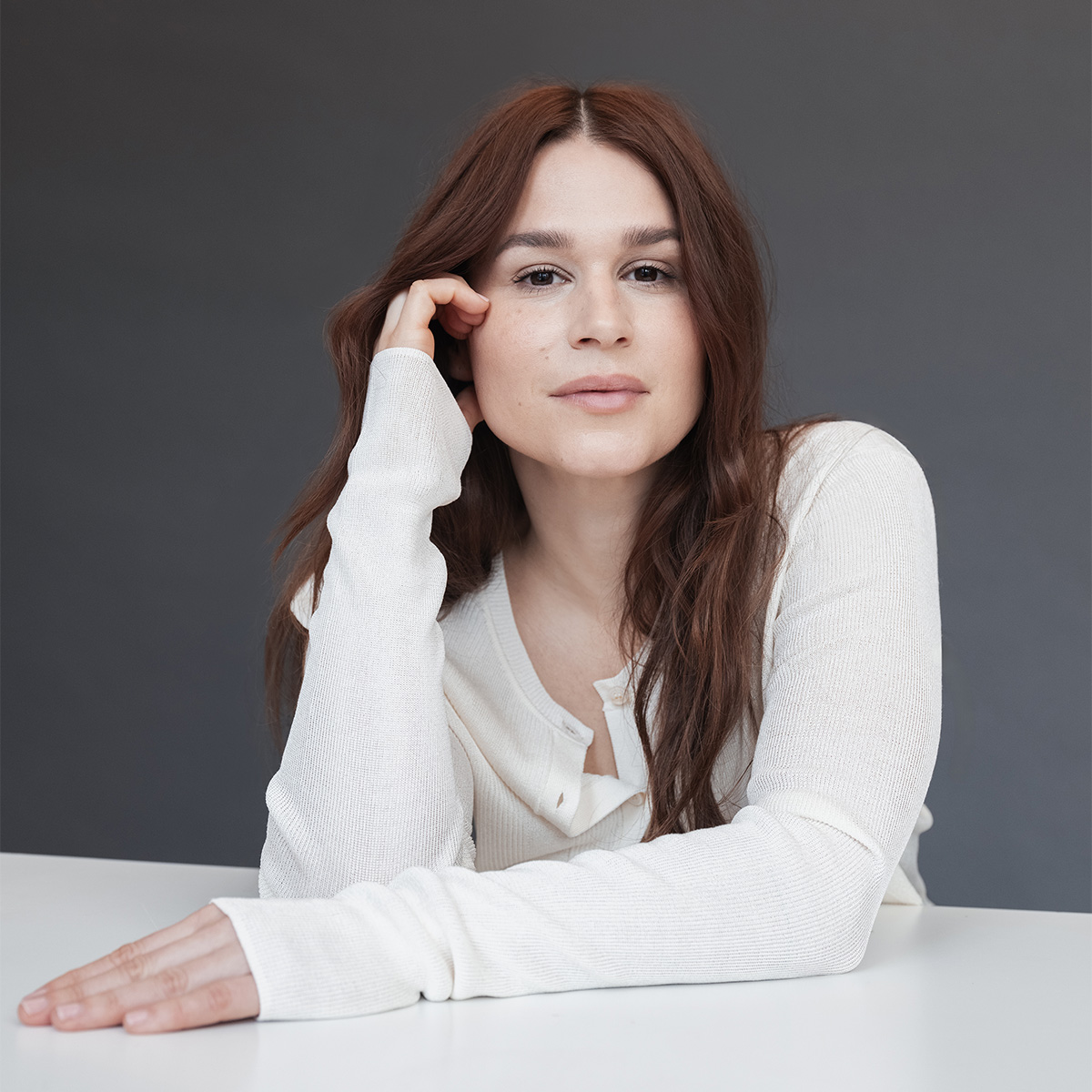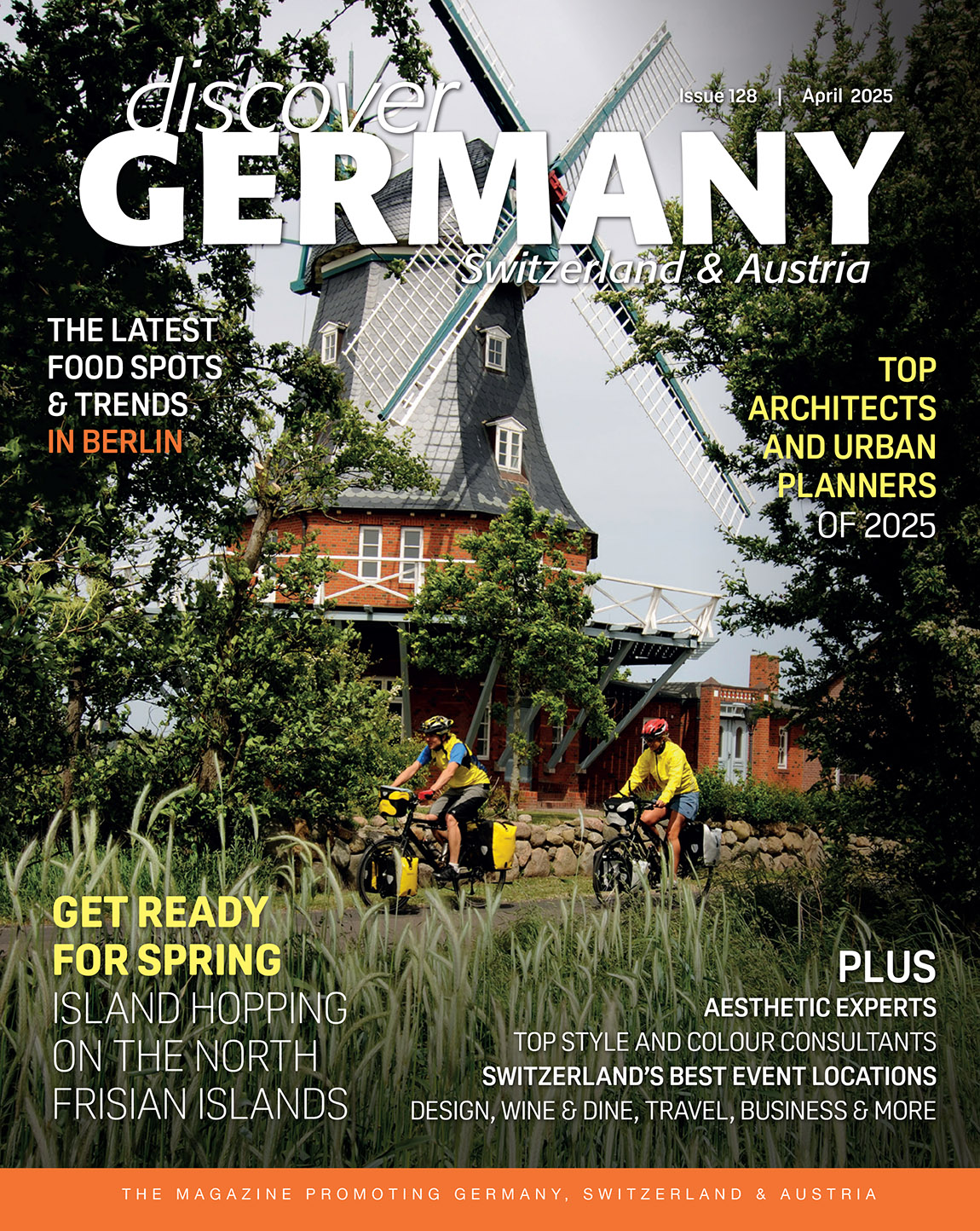THERE’S SOMETHING IN THE WATER
TEXT: WIBKE CARTE
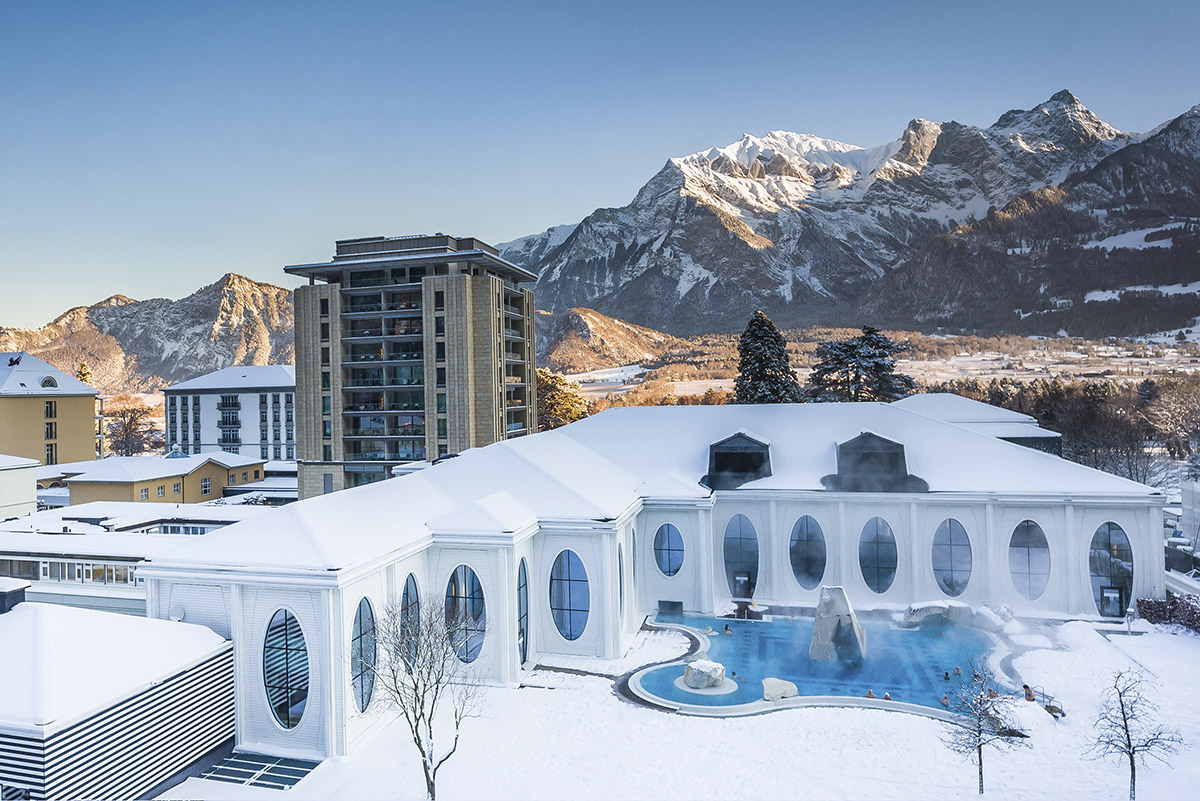
Tamina Therme, exterior pool. Photo: Heidiland Tourismus
Switzerland’s spa town of Bad Ragaz is best known for the healing thermal waters that have been flowing from the Tamina Gorge for hundreds of years. All year round, travellers come here to heal their minds and bodies.
Mankind has been experimenting with water and its healing powers for centuries. In various cultures such as that of Egypt or the Romans, thermal water was utilised for its beneficial properties. Bathing was a ritual and social experience; beautiful public baths were built with the finest materials as temples to bathing and the sacred waters within. One place with such a history based on wellness through water is Bad Ragaz.
Ever since the discovery of the thermal water in the Tamina Gorge in 1242, when two hunters from the Benedictine monastery of Pfäfers came across warm water bubbling out of the rocks, guests have been coming to the small town to take advantage of the water. In 1535, a naturalist and philosopher called Paracelsus was the first doctor to testify to the healing power of the thermal springs. “Originally, patients were lowered into the gorge on ropes in wooden bath houses built across the roaring Tamina,” said Astrid Hüni of the Grand Resort Bad Ragaz, which runs the Tamina Therme thermal pools. “The first people wanting to be healed had to stay in the water for seven days.”
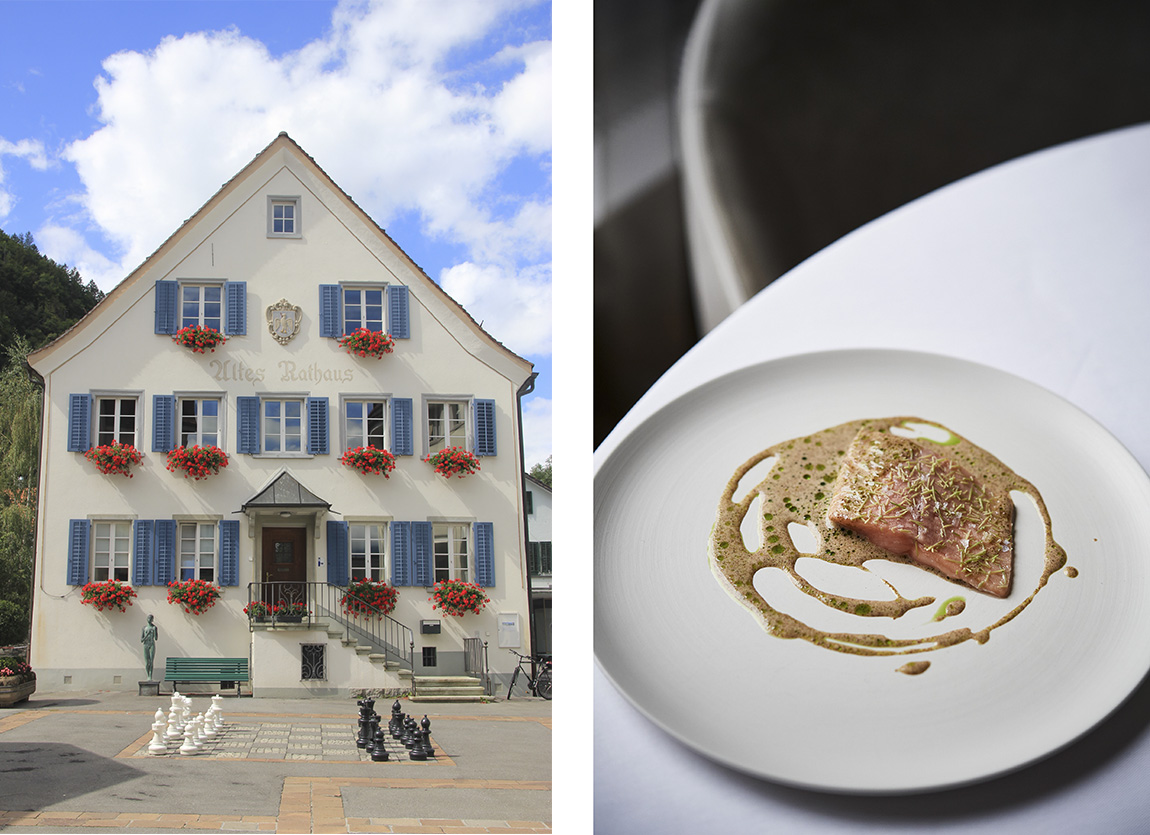
Left: Old town hall. Photo: Wibke Carter. Right: Photo: Grand Resort Bad Ragaz
Rich and famous visitors
The rise to the status of a spa town began in 1840 when the 36.6 Celsius thermal water of the Tamina spring was piped for the first time from the Tamina Gorge four kilometres out of the valley to the Ragaz farm. Famous bathers, such as Friedrich Wilhelm Nietzsche, Thomas Mann, Rainer Maria Rilke and Victor Hugo, subsequently paid their respects to the former farming village.
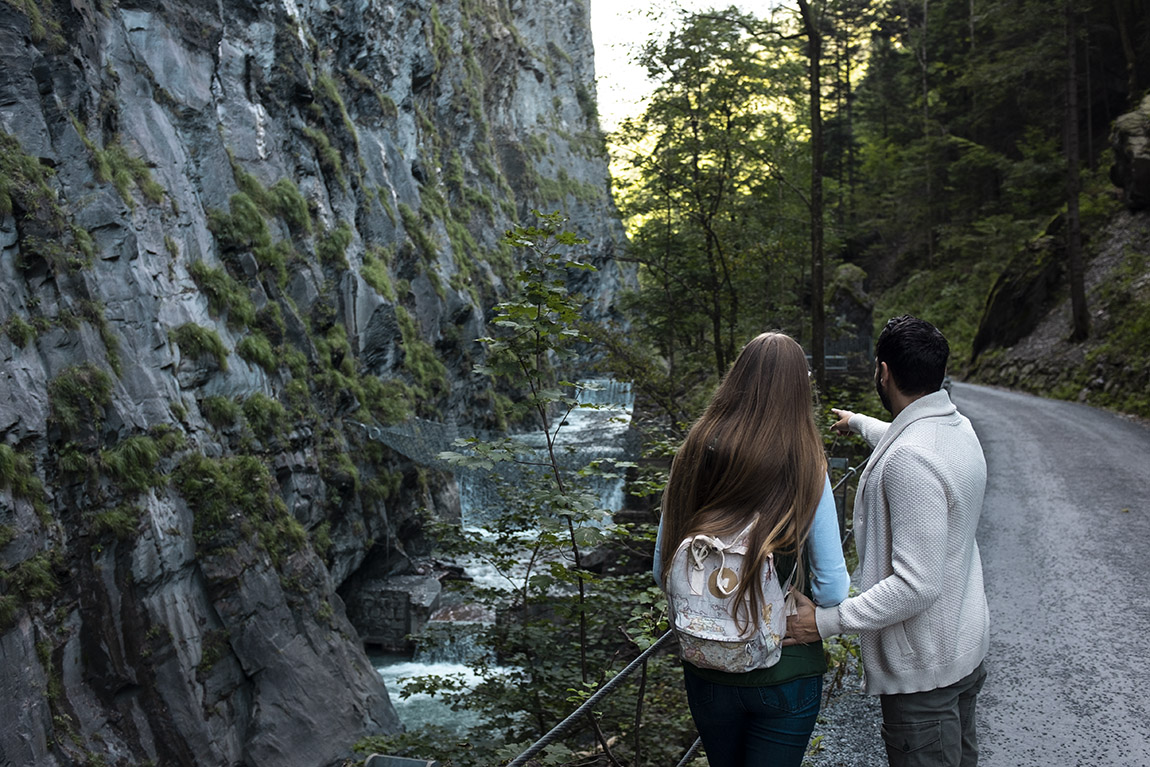
Path into the Tamina Gorge. Photo: Heidiland Tourismus
With the increase in tourism, luxury hotels were built to accommodate wealthy travellers, including Russian nobility. The ties with Russia were in part thanks to Bernhard Simon, a Swiss architect who lived in St. Petersburg from 1839 to 1853. He completed many construction projects for the nobility and the tsar’s family, such as the reconstruction of the renowned Shuvalov palace (headquarters of the Fabergé museums).
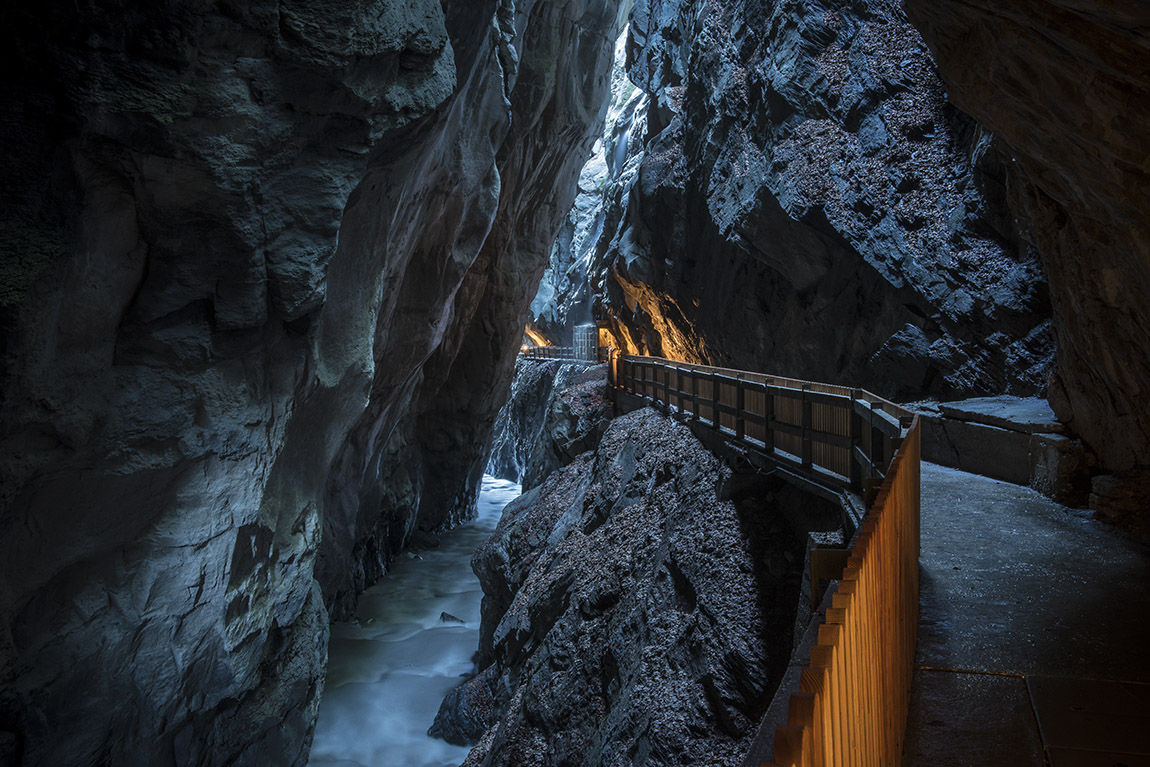
Tamina Gorge. Photo: Heidiland Tourismus
Simon returned to Switzerland due to ill health and finally settled in Bad Ragaz. “He purchased the Domaine Ragaz for 1.2 million Franc, which was an incredible amount back then,” said Astrid Hüni. “In order to fund this enterprise, he borrowed money from the state of Switzerland, which imposed the condition that he had to build both a guesthouse and swimming facilities for the public.” As a result, the Hotel Quellenhof, the Kursaal and the thermal pools were constructed.
From Bad Ragaz it is easy to hike into the Tamina Gorge (alternatively, there is a bus), where after about one hour, the Old Baths Pfäfers is a place worth visiting. Switzerland’s earliest Baroque spa house, where kings and princesses once bathed, now houses a museum describing the history of the Benedictine monastery of Pfäfers, founded in 740, until its dissolution in 1838, as well as the Paracelsus monument. Only a few hundred feet further on is the entrance to the Tamina Gorge.
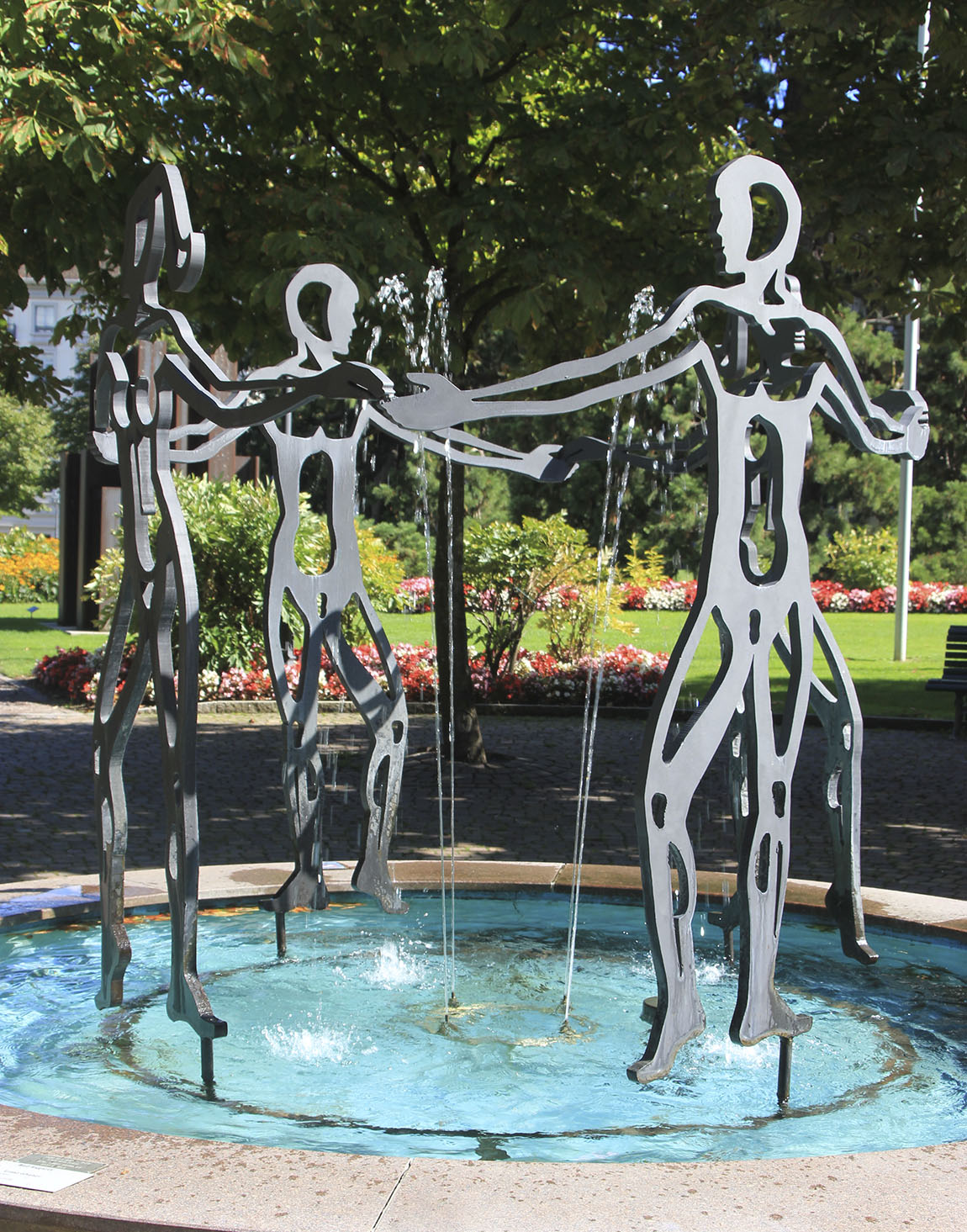
Fountain sculpture in Bad Ragaz. Photo: Wibke Carter
Artworks for everyone
Back in town, there is plenty of art to discover. Numerous sculptures, ranging from blue birds to tall steals to fountains, can be found throughout the townscape. “Behind Europe’s largest open-air sculpture exhibition is the Hohmeister family, who live in Bad Ragaz – and a huge amount of work,” said Adrian Pfiffner of Heidiland Tourism. “From the beginning, the goal of the initiators of the Bad RagARTz was to make art easily accessible and tangible.” The private initiative has become an exhibition that takes place every three years, the next one being in 2024.
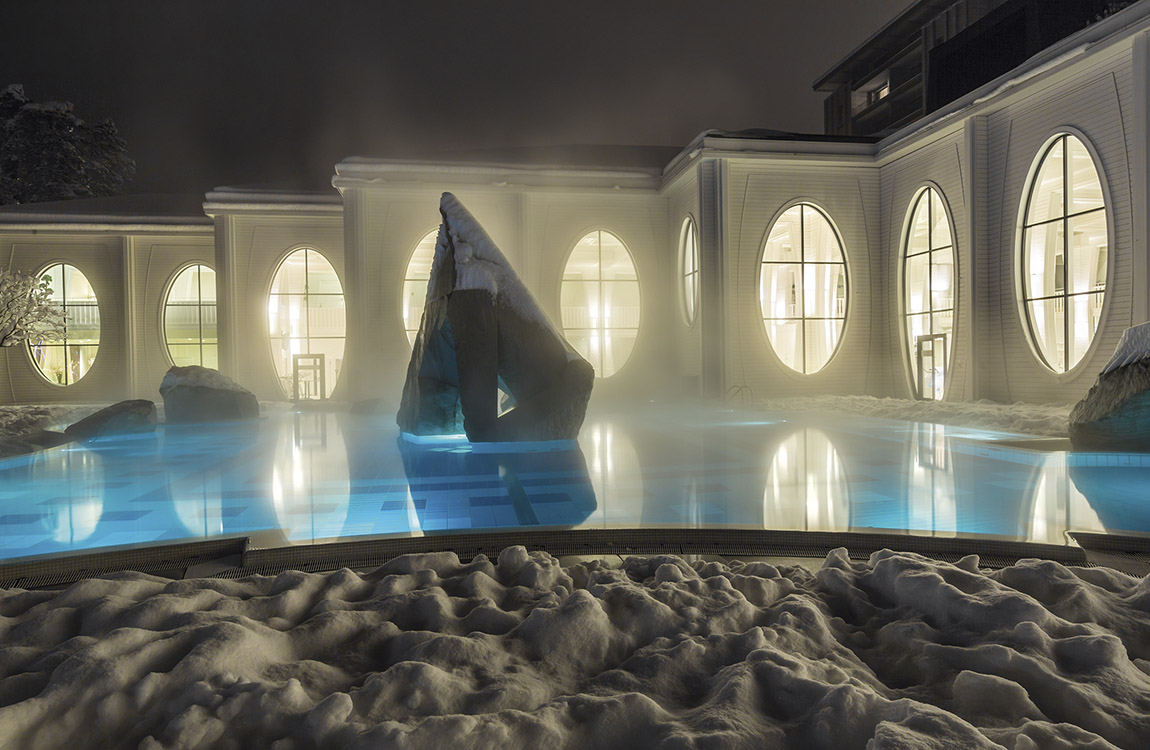
Tamina Therme. Photo: Heidiland Tourismus
In wintertime, when it gets dark early, the sculptures are an enchanting sight outshone only by the trees, bridges and buildings decorated with fairy lights during the Christmas season, which Bad Ragaz is famous for. Every year, locals and guests alike stroll through the spa town to enjoy the contemplative atmosphere. To keep warm a serving of mulled wine is very popular.
Travellers in search of fine dining, yet hearty fare, can head to the restaurant Memories, where Sven Wassmer serves up Alpine cuisine and has been awarded three Michelin stars for his innovative spin on traditional Swiss food. “We work with small producers and use mother nature as our larder. Dairy products are central to the Alps and this is reflected in the cooking,” he says. Guests who choose still rather than sparkling water to go with the food will be served a helping from the thermal waters; and so the history based on wellness through water continues.
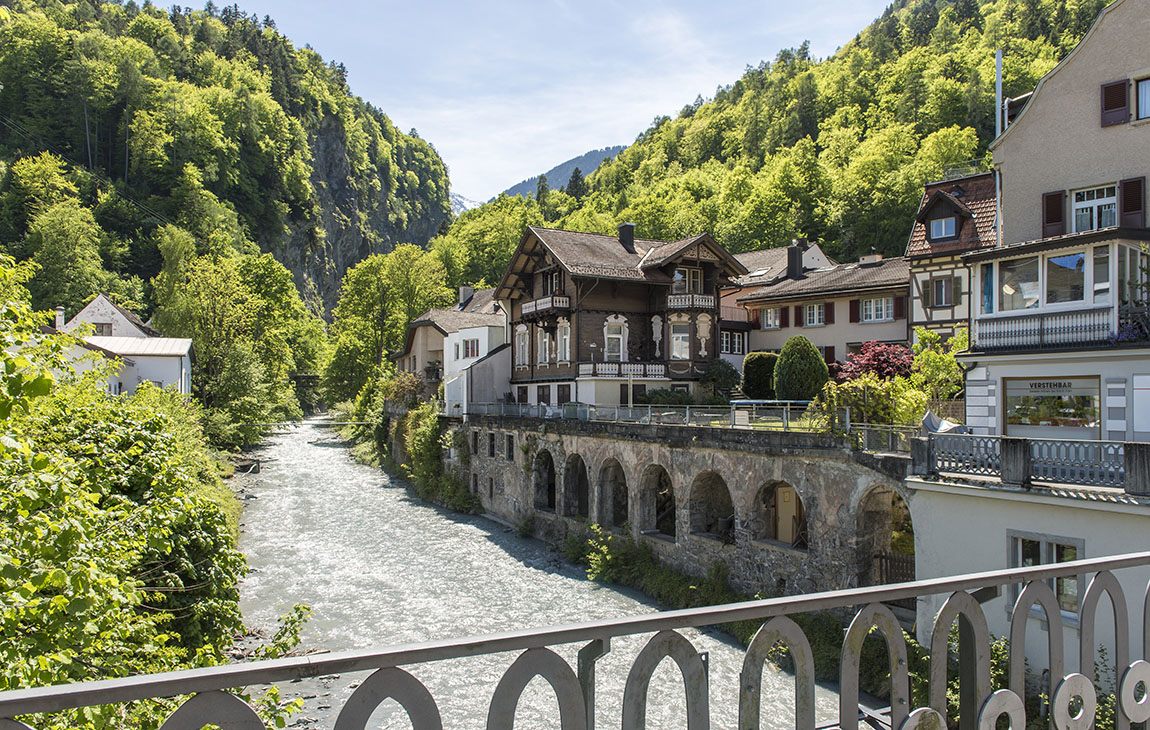
Bad Ragaz Tamina river. Photo: Heidiland Tourismus
Web: www.heidiland.com
www.resortragaz.ch
Subscribe to Our Newsletter
Receive our monthly newsletter by email

